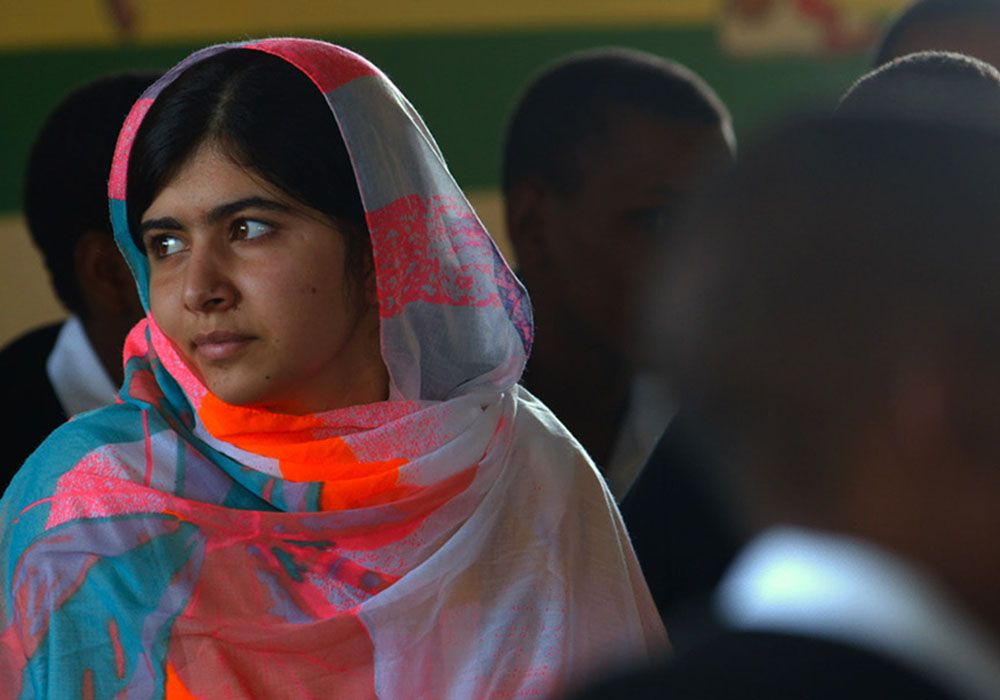On October 9 2012, Malala Yousafzai, a young Pakistani girl and activist was shot in the head by a masked gunman. The third anniversary of that attack marks the release of Academy Award winner Davis Guggenheim’s He Named Me Malala, a documentary that follows the young girl who famously spoke out against the Taliban, wishing for equal education for women around the world.
The harrowing film mends together an intimate story with very few characters to present the outcome of Malala’s heroic actions.
Guggenheim manifests a personal story showcasing Malala’s energy, inspiration, and confidence, but he is not able to delve deep into Malala’s feelings of suffering or sadness.
“She is the most open person I’ve ever met,” says Guggenheim. “But she couldn’t answer my question about suffering. Her suffering. She just couldn’t access that feeling.”
In a way, this negatively impacted the film. Had Malala explored more of her grief and suffering, the direction of the film would have turned to a more serious, empathetic story. Instead, her positive aura embraced the film with a hopeful attitude about changing the world and the power we have to accomplish this.
In some sequences, pastel-coloured animated segments fill the screen, showcasing Guggenheim’s taste for storytelling.
[su_pullquote]“Animation became the most interesting way to tell parts of the story. The imagery represented how a young girl from Pakistan would imagine the events,” says Guggenheim.[/su_pullquote]
Faceless figures embodied the screen, moving and interacting with one another. There was a sense of anxiety in the sequences, anticipating the events to come.
Guggenheim elaborates on his style of creating He Named Me Malala.
“Usually, documentarians bring in a crew with lights and cameras and suddenly people stop [being] real because all this equipment comes in. I start by just walking in, sitting down and having a conversation with Malala or whomever I was interviewing. There was no agenda,” he says.
The documentary has a personal and intimate motif. Guggenheim did not want to surround Malala or any of the subjects with anything but himself and the story they wanted to tell. With no large film crew or fancy lighting, Guggenheim didn’t need to re-shoot because he captured the magic in the first takes.
He Named Me Malala is inspiring, presenting the emotional core of our main protagonist Malala. Today, Malala remains a dedicated student, having recently passed her General Certificate of Secondary Education tests with flying colours. Behind the curtains, Malala is still a teenager finding herself.
“I have to keep reminding myself that she’s an ordinary girl. She chose to risk her life. Her father chose to risk his life. They weren’t born extraordinary. It was their choices and what they did that made them extraordinary,” adds Guggenheim.
Arguably the co-star of the film, Malala’s father Ziauddin, frames the narrative and became a role model for Guggenheim. “I want to know how to be a good father. For me, if I could personally invest in those answers, then that could come through in the movie,” he added.
In life, we tend to overlook the power we have to change the world, believing it will be too difficult. All we need is our voice. The human voice is more powerful than any weapon in the world, as Malala has so clearly demonstrated by making a choice to do an extraordinary thing, change the world.
He Named Me Malala hits theatres with a wide release on October 9.
[su_youtube url=”https://www.youtube.com/watch?v=vE5gSHJkusU” width=”640″]
Eric Bizzarri, Staff Writer
Featured image courtesy of Toronto International Film Festival


